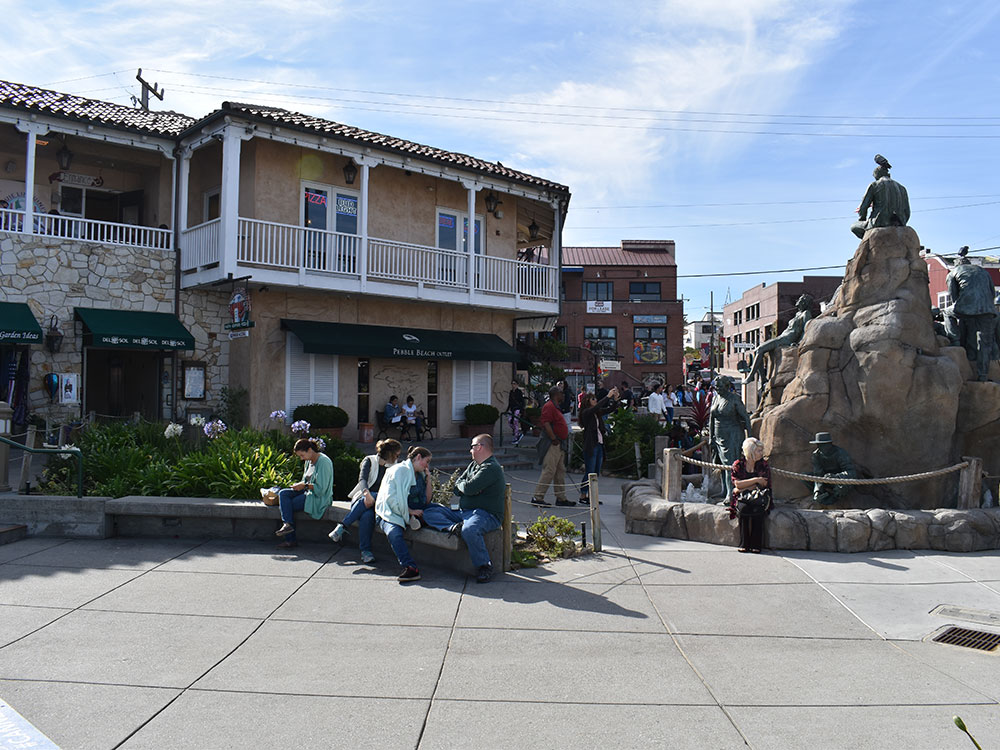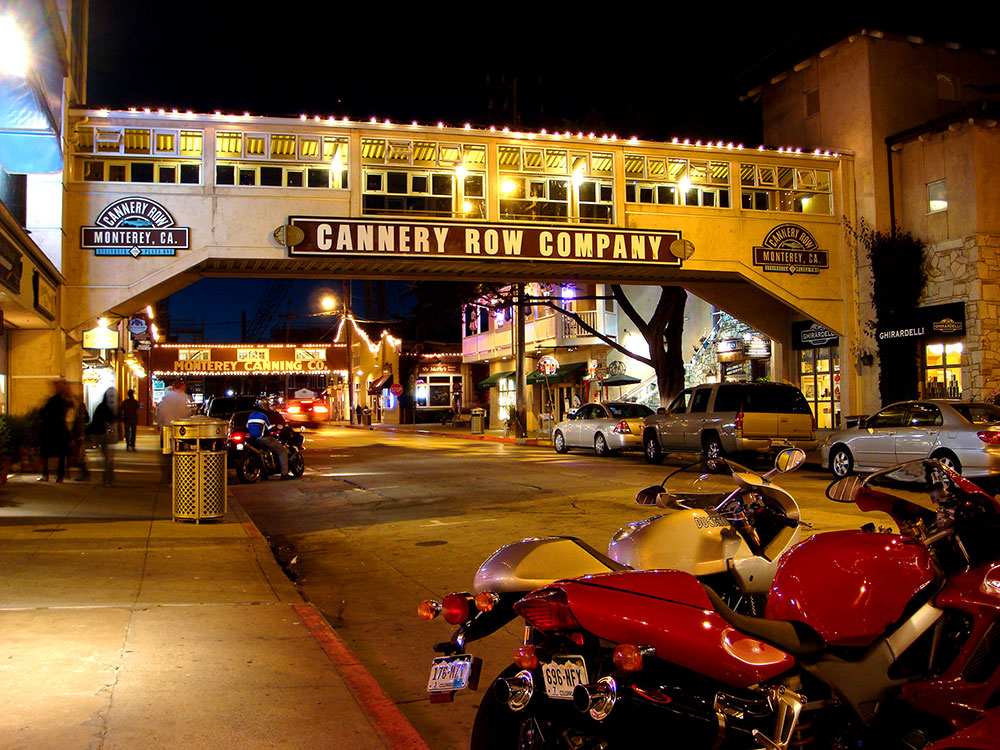Waterfront street was the site of a number of now-defunct sardine canning factories
Park open daily sunrise to sunset
Vikingsholm Tour
Offered daily every 30 minutes from 10:30am to 4pm
May 29 to September 30
No entrance fees
Vikingsholm Parking Lot
Fees for parking are $10 per vehicle for the day, or $3 per vehicle for 1 hour
Fees are required by self-payment. . The pay machine accepts cash (exact change) or credit card
Vikingsholm Tour
Adults: $15.00
Students 7-17 years and with valid college ID/active duty military/seniors: $12.00
Children under 7 years: Free
Purchase tickets at the Visitor Center just past Vikingsholm. The Visitor Center is open daily during the tour season from 10am to 4:30pm
Dogs are allowed within the two campgrounds only—the Boat Camp paved campground loop and Eagle Point paved campground road and campsites Dogs are allowed on boats and at the vista overlook at the Vikingsholm Trail parking lot.
Overview
Cannery Row is the waterfront street bordering the city of Pacific Grove, but officially in the New Monterey section of Monterey, California. It was the site of a number of now-defunct sardine canning factories. The last cannery closed in 1973. The street name, formerly a nickname for Ocean View Avenue, became official in January 1958 to honor John Steinbeck and his well-known novel Cannery Row. In the novel's opening sentence, Steinbeck described the street as "a poem, a stink, a grating noise, a quality of light, a tone, a habit, a nostalgia, a dream."
Cannery Row was adjoined by a grand mansion owned by Montana mining tycoon James A. Murray. Known as "Casa de las Olas" or the Murray Hacienda, the mansion was demolished in the 1940s to make way for the expansion of more canneries. A historical marker is located on the site of the former mansion. The canneries failed after the collapse of the fishing industry in Monterey Bay in the mid-1950s, which resulted from a combination of factors, including unfavorable oceanic conditions, over-fishing, and competition from other species. In his investigation of where the sardines had gone, Ed Ricketts finally concluded "They're in cans." Before the collapse, the fishery was one of the most productive in the world due to the upwelling of cold yet nutrient-rich water along the California coastline.
Today the area offshore from Cannery Row is the Edward F. Ricketts State Marine Conservation Area (part of the larger Monterey Bay National Marine Sanctuary) and is home to a large resurgent population of California sea lions.
Cannery Row itself is now a tourist attraction with many restaurants and hotels, several of which are located in former cannery buildings, and a few historic attractions. Some privately owned fishing companies still exist on Cannery Row, housed on piers located a short distance from the historic district frequented by tourists.
In recent years, Cannery Row has become increasingly popular among sport fishermen due to extensive public fishing facilities. MacAbee Beach and San Carlos Beach, which bookend Cannery Row are both popular spots for kayak-launching; San Carlos Beach is one of Monterey Bay's most popular scuba-diving spots.
This article uses material from the Wikipedia article "Cannery Row", which is released under the Creative Commons Attribution-Share-Alike License 3.0
-1000.jpg) Jim G from Silicon Valley, CA, USA, CC BY 2.0, via Wikimedia Commons ; Image Size Adjusted
Jim G from Silicon Valley, CA, USA, CC BY 2.0, via Wikimedia Commons ; Image Size Adjusted FASTILY, CC BY-SA 4.0, via Wikimedia Commons ; Image Size Adjusted
FASTILY, CC BY-SA 4.0, via Wikimedia Commons ; Image Size Adjusted Amadscientist, CC BY-SA 3.0, via Wikimedia Commons; Image Size Adjusted
Amadscientist, CC BY-SA 3.0, via Wikimedia Commons; Image Size Adjusted